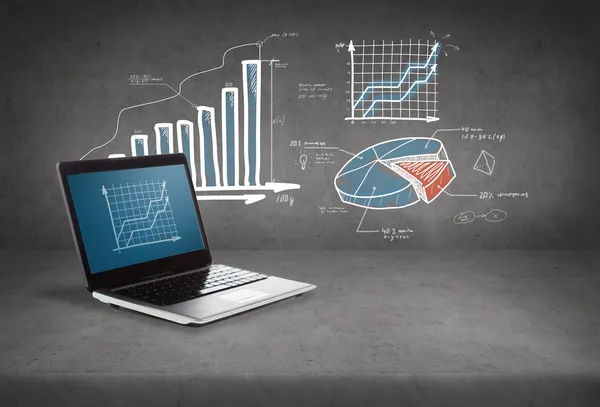Unlocking the Power of Data Analytics: A Comprehensive Exploration

In today&8217;s data-driven world, the ability to derive actionable insights from vast amounts of data is paramount for organizations seeking to gain a competitive edge, enhance decision-making processes, and drive innovation. Data analytics, the process of analyzing and interpreting data to uncover patterns, trends, and correlations, lies at the heart of this endeavor. In this comprehensive exploration, we delve into the multifaceted world of data analytics, examining its evolution, methodologies, applications, benefits, challenges, and future trends.
The field of data analytics has undergone a remarkable evolution over the years, driven by advancements in technology, data storage, and computational power. Initially, data analytics primarily focused on descriptive analytics, which involved summarizing historical data to gain insights into past performance and trends. However, as organizations sought to harness the predictive power of data to anticipate future outcomes and trends, predictive analytics emerged as a key focus area. Predictive analytics leverages statistical algorithms and machine learning techniques to analyze historical data and make predictions about future events or behaviors. More recently, prescriptive analytics has gained prominence, offering organizations actionable insights and recommendations to optimize decision-making processes and drive business outcomes.
Methodologies and Techniques: Uncovering Insights from Data
Data analytics encompasses a wide range of methodologies and techniques designed to extract meaningful insights from data. These include:
Descriptive Analytics: Summarizing and visualizing data to gain insights into past performance and trends.
Predictive Analytics: Building statistical models and machine learning algorithms to forecast future outcomes and trends.
Prescriptive Analytics: Recommending actions and interventions to optimize decision-making processes and achieve business objectives.
Diagnostic Analytics: Identifying the root causes of problems or issues by analyzing historical data and patterns.
Text Analytics: Analyzing unstructured textual data, such as emails, social media posts, and customer reviews, to extract insights and sentiment analysis.
Geospatial Analytics: Analyzing geographic and spatial data to uncover patterns, trends, and relationships.
Applications Across Industries: Transforming Business Processes
Data analytics has transformative implications across a wide range of industries and sectors, empowering organizations to enhance efficiency, drive innovation, and gain a competitive advantage. In healthcare, data analytics is used to analyze patient data, optimize treatment protocols, and improve clinical outcomes. In finance, data analytics enables organizations to detect fraudulent activities, assess credit risk, and personalize financial services for customers. In retail, data analytics is employed to analyze customer behavior, optimize pricing strategies, and personalize marketing campaigns. In manufacturing, data analytics is used to optimize supply chain management, predict equipment failures, and improve production processes. Across all industries, data analytics is driving digital transformation initiatives, enabling organizations to adapt to changing market dynamics, customer preferences, and regulatory requirements.
Benefits of Data Analytics: Driving Innovation and Competitive Advantage
The adoption of data analytics offers numerous benefits for organizations seeking to harness the power of data to drive innovation and gain a competitive advantage. Some of the key benefits include:
Informed Decision-Making: Data analytics provides organizations with actionable insights and intelligence to make informed, data-driven decisions across all levels of the organization.
Improved Efficiency: By automating manual processes, identifying inefficiencies, and optimizing workflows, data analytics enables organizations to improve operational efficiency and productivity.
Enhanced Customer Experience: By analyzing customer data and behavior, organizations can personalize products, services, and marketing campaigns to better meet the needs and preferences of their customers.
Risk Mitigation: Data analytics helps organizations identify and mitigate risks, such as fraud, cybersecurity threats, and compliance violations, before they escalate into larger issues.
Innovation and Product Development: By analyzing market trends, consumer preferences, and competitor activities, organizations can identify new opportunities for innovation and develop products and services that meet evolving customer needs.
Challenges and Considerations: Navigating Complexity and Ethical Issues
Despite its many benefits, data analytics also presents challenges and considerations that organizations must navigate to realize its full potential. Some of the key challenges include:
Data Quality and Governance: Ensuring the accuracy, completeness, and reliability of data is essential for effective data analytics. Organizations must implement data governance policies, processes, and controls to maintain data quality and integrity.
Privacy and Security: With the increasing volume and sensitivity of data being analyzed, organizations must prioritize data privacy and security to protect against unauthorized access, breaches, and misuse of data.
Skills and Talent: Data analytics requires specialized skills and expertise in areas such as statistics, machine learning, programming, and data visualization. Organizations must invest in training and development programs to build and retain a skilled workforce.
Ethical Considerations: Data analytics raises ethical concerns related to data privacy, bias, discrimination, and transparency. Organizations must develop ethical frameworks and guidelines to ensure responsible and ethical use of data in decision-making processes.
Future Trends in Data Analytics: Embracing AI, Automation, and Advanced Analytics
Looking ahead, the future of data analytics is characterized by several key trends and developments. These include:
Artificial Intelligence and Machine Learning: AI and machine learning technologies will play an increasingly important role in data analytics, enabling organizations to automate data analysis, uncover hidden patterns, and make accurate predictions.
Edge Analytics: With the proliferation of IoT devices and sensors, edge analytics will enable organizations to analyze data closer to its source, reducing
